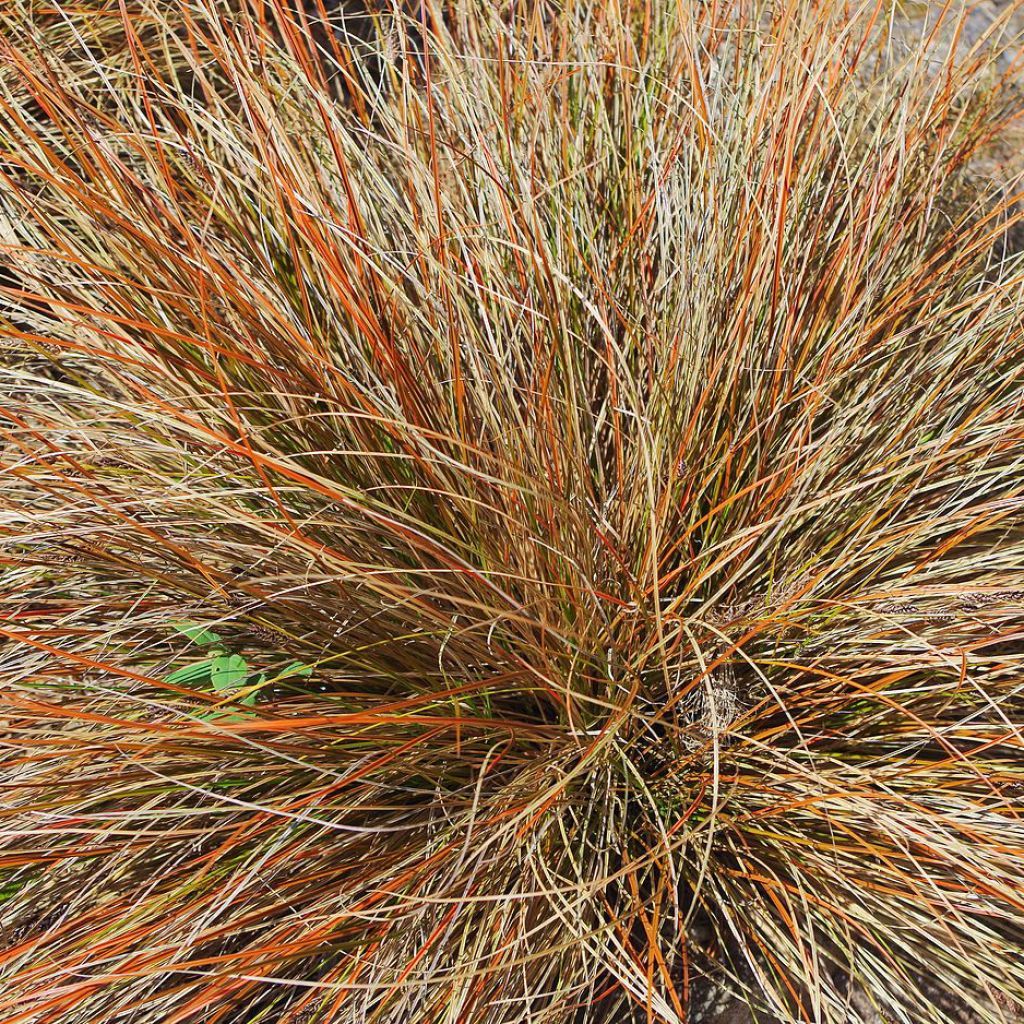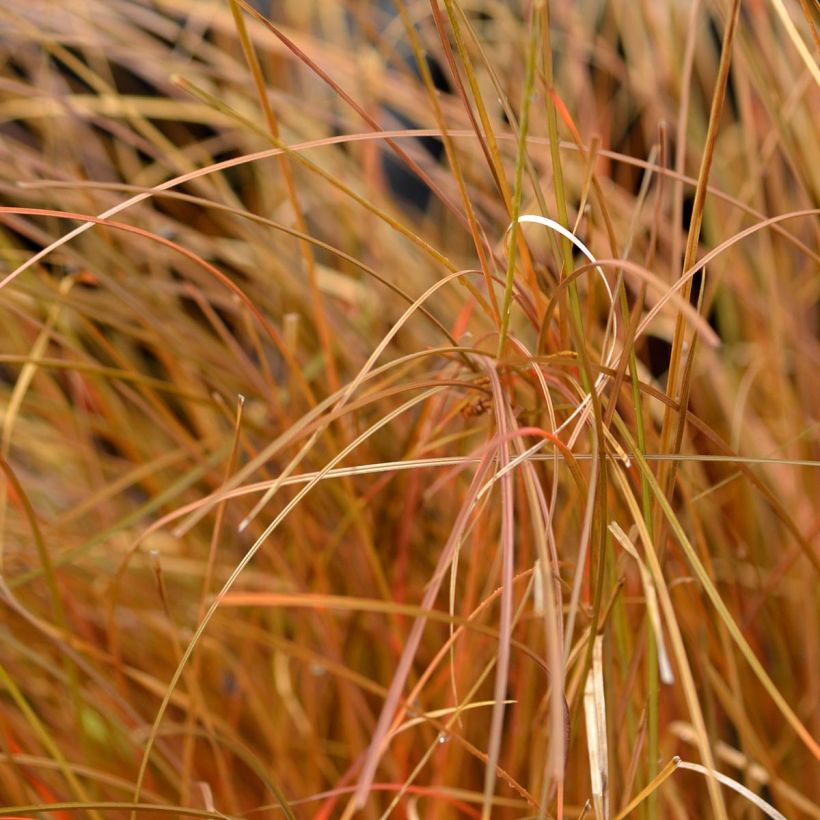

Carex comans Bronze Form


Carex comans Bronze Form
Carex comans Bronze Form
Carex comans Bronze Form
Sedge
Nice plant. The only one that arrived in good condition in this order.
Annie, 22/02/2025
Special offer!
Receive a €20 voucher for any order over €90 (excluding delivery costs, credit notes, and plastic-free options)!
1- Add your favorite plants to your cart.
2- Once you have reached €90, confirm your order (you can even choose the delivery date!).
3- As soon as your order is shipped, you will receive an email containing your voucher code, valid for 3 months (90 days).
Your voucher is unique and can only be used once, for any order with a minimum value of €20, excluding delivery costs.
Can be combined with other current offers, non-divisible and non-refundable.
Home or relay delivery (depending on size and destination)
Schedule delivery date,
and select date in basket
This plant carries a 12 months recovery warranty
More information
We guarantee the quality of our plants for a full growing cycle, and will replace at our expense any plant that fails to recover under normal climatic and planting conditions.

Would this plant suit my garden?
Set up your Plantfit profile →
Description
Carex Comans 'Bronze Form' is a New Zealand Sedge prized for its bronze-coloured foliage with metallic reflections. This grass forms a dense, fountain-shaped tuft composed of numerous long and slender flexible leaves, in which the wind and light play. Its vegetation takes on beautiful shades of orange in autumn and persists throughout winter. Perfect in a contemporary setting, and in a naturalistic-style bed. Its sculptural aspect also adds character to a patio or balcony.
Carex comans is a grass native to New Zealand, particularly the Stewart Islands. It grows in clear understories and forest edges, in well-drained soils, from coastal areas to subalpine meadows. Like all carex, it belongs to the Cyperaceae family.
As its name suggests, 'Bronze Form' stands out from the typical species with its foliage colour, as well as its broader and more flexible habit. The leaves are very fine, linear, strongly arched, and curled at their tips. They form a fountain-like shape measuring 40cm (16in) in height and 45 to 50cm (18 to 20in) in diameter. In spring, their colour is a light brown in the centre, becoming more silvery at the tips. In summer, the overall colour is a lovely dark bronze tone, shining with silver reflections. In autumn, the vegetation takes on orange to brown hues. The flowers appear in June and July and are a reddish-brown colour, but they have no significant ornamental value. Similar to Carex buchananii, Carex comans is easier to cultivate in well-drained clay soil. It thrives when planted in full sun or partial shade, in ordinary, moist soil. It tolerates summer drought quite well.
Plant Carex comans 'Bronze Form' along a pathway, in a raised bed, in a rockery, or on top of a wall, allowing its foliage to cascade naturally. For example, pair it with the grey or blue-grey foliage of Stachys byzantina 'Big Ears' or silvery santolina. The acid green flowers of euphorbias (Euphorbia myrsinites), the small purple pompoms of ornamental garlic, and the mauve aster 'Silberblaukissen' will enhance the brilliance of its warm-coloured foliage. Resourceful gardeners can use this plant to create unique decorations, such as placing several pots of Carex comans at different levels on a wooden structure. At the base of this structure, plant some annuals like marigolds, red salvias, purple morning glories, and blue lobelia.
Report an error about the product description
Carex comans Bronze Form in pictures




Flowering
Foliage
Plant habit
Botanical data
Carex
comans
Bronze Form
Cyperaceae
Sedge
Oceania
Other Carex
View all →Planting and care
It thrives in the sun, but also in partial shade. Preferring slightly moist soils in summer, it withstands summer drought once well established. However, very wet and heavy soils are detrimental to it in winter. Prepare a planting hole that is 20x20x20cm (8x8x8in) in size. If your soil is heavy, mix some compost with the crumbled soil, partially fill the hole, and place your plant so that the top of the root ball is covered with 3cm (1in) of soil. Firmly press down and water generously to eliminate air pockets. In dry weather, you will need to water regularly for a few weeks to facilitate the establishment of your young plant.
Planting period
Intended location
Care
-
, onOrder confirmed
Reply from on Promesse de fleurs
Similar products
Haven't found what you were looking for?
Hardiness is the lowest winter temperature a plant can endure without suffering serious damage or even dying. However, hardiness is affected by location (a sheltered area, such as a patio), protection (winter cover) and soil type (hardiness is improved by well-drained soil).

Photo Sharing Terms & Conditions
In order to encourage gardeners to interact and share their experiences, Promesse de fleurs offers various media enabling content to be uploaded onto its Site - in particular via the ‘Photo sharing’ module.
The User agrees to refrain from:
- Posting any content that is illegal, prejudicial, insulting, racist, inciteful to hatred, revisionist, contrary to public decency, that infringes on privacy or on the privacy rights of third parties, in particular the publicity rights of persons and goods, intellectual property rights, or the right to privacy.
- Submitting content on behalf of a third party;
- Impersonate the identity of a third party and/or publish any personal information about a third party;
In general, the User undertakes to refrain from any unethical behaviour.
All Content (in particular text, comments, files, images, photos, videos, creative works, etc.), which may be subject to property or intellectual property rights, image or other private rights, shall remain the property of the User, subject to the limited rights granted by the terms of the licence granted by Promesse de fleurs as stated below. Users are at liberty to publish or not to publish such Content on the Site, notably via the ‘Photo Sharing’ facility, and accept that this Content shall be made public and freely accessible, notably on the Internet.
Users further acknowledge, undertake to have ,and guarantee that they hold all necessary rights and permissions to publish such material on the Site, in particular with regard to the legislation in force pertaining to any privacy, property, intellectual property, image, or contractual rights, or rights of any other nature. By publishing such Content on the Site, Users acknowledge accepting full liability as publishers of the Content within the meaning of the law, and grant Promesse de fleurs, free of charge, an inclusive, worldwide licence for the said Content for the entire duration of its publication, including all reproduction, representation, up/downloading, displaying, performing, transmission, and storage rights.
Users also grant permission for their name to be linked to the Content and accept that this link may not always be made available.
By engaging in posting material, Users consent to their Content becoming automatically accessible on the Internet, in particular on other sites and/or blogs and/or web pages of the Promesse de fleurs site, including in particular social pages and the Promesse de fleurs catalogue.
Users may secure the removal of entrusted content free of charge by issuing a simple request via our contact form.
The flowering period indicated on our website applies to countries and regions located in USDA zone 8 (France, the United Kingdom, Ireland, the Netherlands, etc.)
It will vary according to where you live:
- In zones 9 to 10 (Italy, Spain, Greece, etc.), flowering will occur about 2 to 4 weeks earlier.
- In zones 6 to 7 (Germany, Poland, Slovenia, and lower mountainous regions), flowering will be delayed by 2 to 3 weeks.
- In zone 5 (Central Europe, Scandinavia), blooming will be delayed by 3 to 5 weeks.
In temperate climates, pruning of spring-flowering shrubs (forsythia, spireas, etc.) should be done just after flowering.
Pruning of summer-flowering shrubs (Indian Lilac, Perovskia, etc.) can be done in winter or spring.
In cold regions as well as with frost-sensitive plants, avoid pruning too early when severe frosts may still occur.
The planting period indicated on our website applies to countries and regions located in USDA zone 8 (France, United Kingdom, Ireland, Netherlands).
It will vary according to where you live:
- In Mediterranean zones (Marseille, Madrid, Milan, etc.), autumn and winter are the best planting periods.
- In continental zones (Strasbourg, Munich, Vienna, etc.), delay planting by 2 to 3 weeks in spring and bring it forward by 2 to 4 weeks in autumn.
- In mountainous regions (the Alps, Pyrenees, Carpathians, etc.), it is best to plant in late spring (May-June) or late summer (August-September).
The harvesting period indicated on our website applies to countries and regions in USDA zone 8 (France, England, Ireland, the Netherlands).
In colder areas (Scandinavia, Poland, Austria...) fruit and vegetable harvests are likely to be delayed by 3-4 weeks.
In warmer areas (Italy, Spain, Greece, etc.), harvesting will probably take place earlier, depending on weather conditions.
The sowing periods indicated on our website apply to countries and regions within USDA Zone 8 (France, UK, Ireland, Netherlands).
In colder areas (Scandinavia, Poland, Austria...), delay any outdoor sowing by 3-4 weeks, or sow under glass.
In warmer climes (Italy, Spain, Greece, etc.), bring outdoor sowing forward by a few weeks.



















































